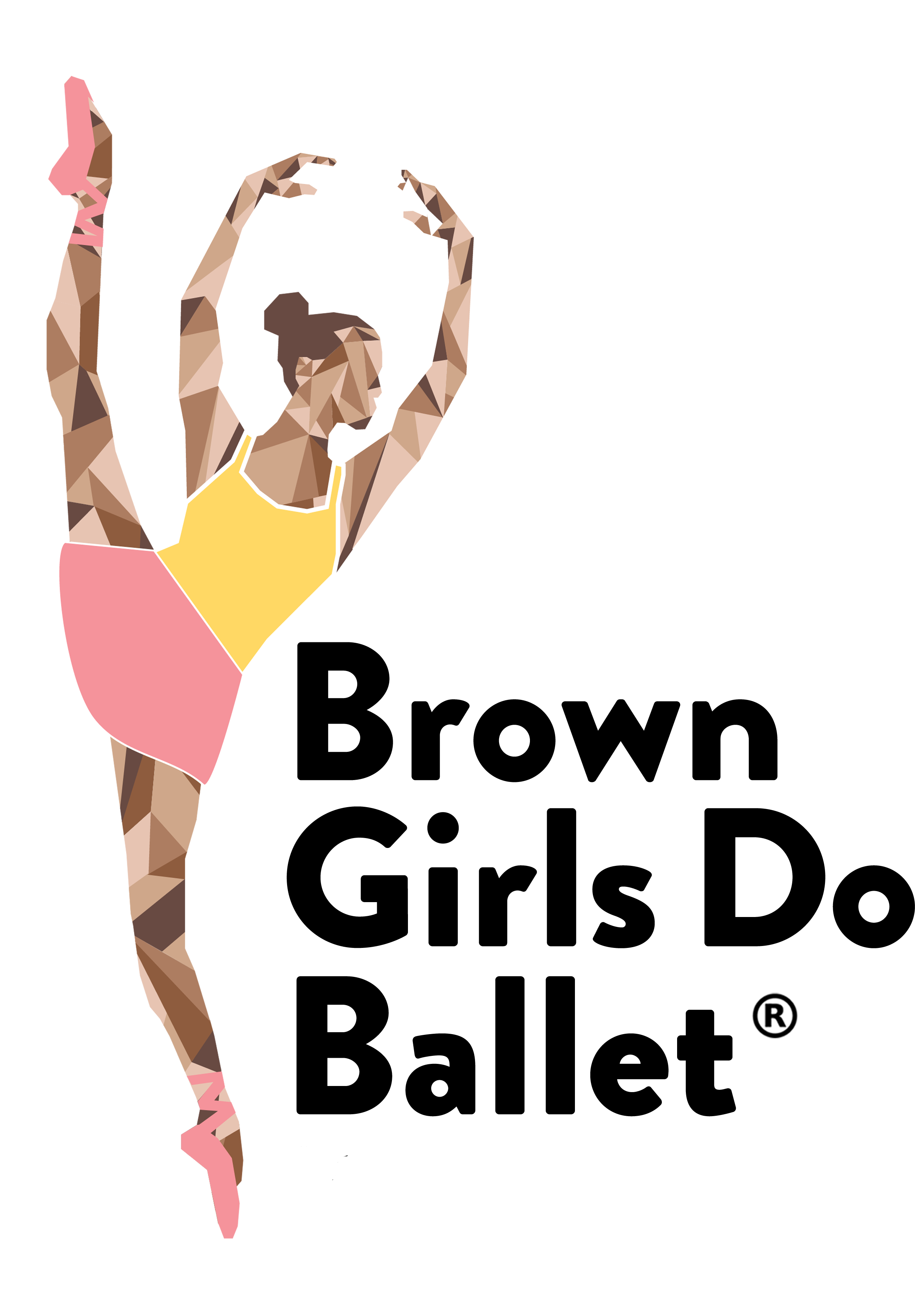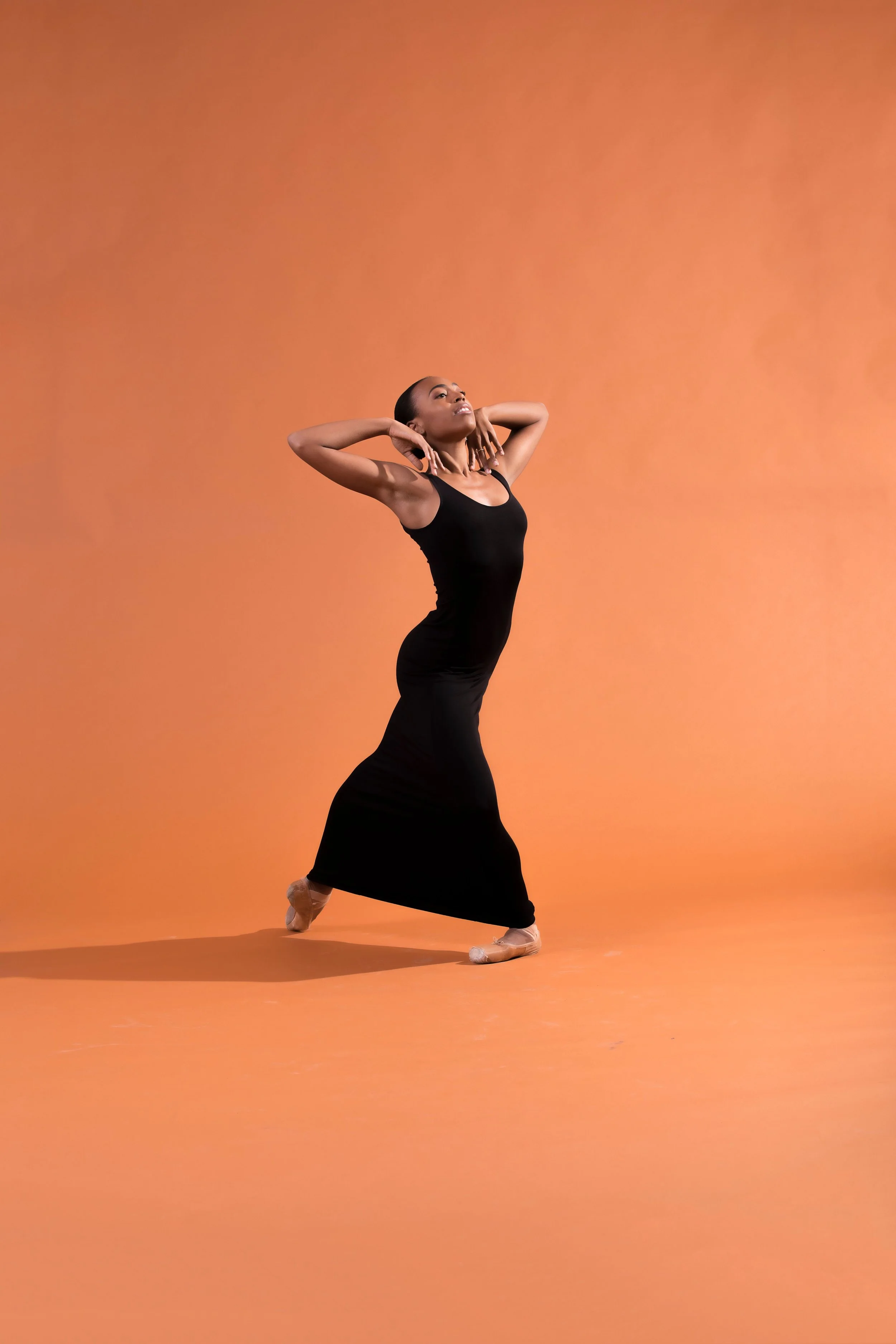Brown Ballerina Advice: Jazz Bynum on Resiliency, Faith, and Healing
Jazz Bynum, a 25-year-old ballerina from Salt Lake City, started dancing when she was around 5 years old. Although her mom enrolled her in a variety of activities, such as swimming and gymnastics, ballet was always her favorite. “I really don’t remember a time without it,” she said. Since then, Jazz has cultivated a colorful dance experience, including her fair share of health-related challenges, such as living with EDS and recovering from a thrice-repeated ACL tear. Ouch!
Through it all, Jazz has maintained a positive outlook - one she attributes each of her successful recoveries to. Today, she shares her healing journey through video testimonials on her Instagram profile, hoping to reach as many dancers who need to hear her message as possible. In our interview with Jazz, she shares her lessons on faith, persistence, and everything else it takes to be a Resilient Ballerina.
Jazz Bynum; shot by Greg Baird
When were you diagnosed with EDS, and how has it affected your life/dance journey?
I was diagnosed with EDS in 2017. As far as physically being able to dance, I haven’t had difficulty outside of injuries. My joints and organs are mobile and have the ability to keep stretching (since surgery I gained another 2 degrees of hyperextension in my non-surgical side). So, I have had to deal with injuries that would have happened later in life sooner, due to being so active.
While it is frustrating to recover from injuries, I love seeing how strong I am when I come back, and relearning my body and what works for the future. I received a procedure tailored to EDS patients and I have been able to rewire and refine my technique. One thing I love now is I have a deeper plié!
Day-to-day is where I have had to make most of my adjustments, mainly in food, as that has been the cause of flare ups I have. Managing stress levels is important because anxiety for me is both physically and mentally intense. In hotter temperatures, managing swelling can be challenging. I have to see many specialists to maintain the progress of my systems functioning. Luckily, I have found a diet that has significantly decreased some of my symptoms.
Tell me about your ACL tear. What went through your mind when it happened and what has your healing process consisted of?
I was shocked! I wasn’t in any pain and really didn’t think I did anything that severe. I was able to keep dancing through the week. My doctors wanted to get an MRI to be sure everything was okay, especially since I tore this ACL before. Initially, I was overwhelmed because I couldn’t believe this happened again. I knew right away I was going to need surgery again. It was a lot more challenging than I anticipated, which surprised me because I thought I would be fine having been through this before. Everything was different about this process; in most ways this was positive.
I found healing through sports psychology and the immense love and support of my mom, grandmother and sister. Where I found most healing and growth was through prayer and learning where to put my faith. A lot of things I learned and areas that needed growth could not have happened without my faith.
How did you use resilience as a tool in your healing process?
The definition of resilience is one of the strongest ways to describe me. It shows how I have recovered from nearly every lesson or challenge in my life. As far as my healing process, I always listen to my body and talk to my knee. Our bodies are just as living and breathing as we are, and when days are hard I give it extra encouragement and acknowledgment.
My past and recent recoveries have been quick, not because I pushed or rushed my recovery, but because my body functions and heals that way; I don’t ignore the bad days, the intense emotions, and I actively listen to what I need to grow; and because I had the grace, love and power of Jesus to support me. The power I have to maintain my resilience is beyond me. It brings me great comfort knowing I don't have to do any of this alone.
In what ways has your dance journey changed since your injury? How do you cope with the changes?
Not being able to work and perform is hard, but I found a way to ease these healing processes. I learned this a long time ago and always share it with others: focus on the little victories, not the end goal. The little victories can be as small or as big as you need.
When I looked forward to this season, I did not anticipate this injury. Now, I can look at this journey and be grateful for the growth I've gained, and the space to redefine who I am as a dancer. Everyday, I look forward to what my body will do. I feel much more connected and stronger now, which amazes me when I think of how far I've come.
I noticed you transparently share a lot of your healing journey through videos on Instagram. Why did you decide to do this, and what do you hope dancers will learn from your videos?
This started in college, after my second ACL tear and being alone in recovery for the first time. I needed support, but I also noticed how other dancers around me were struggling with injuries, and some weren’t sure how to deal with them. So I created a space for dancers to be - whether they wanted to speak or not was up to them, but it was there for safety and comfort. I also extended myself to others who maybe didn’t want a group setting, but still needed love or advice. From this, The Resilient Ballerina blossomed.
It really was not about me. I saw how my journey or situation inspired others or encouraged them. I saw how my trial and error created a better process for others and I figured I could keep trying to reach and help others. For dancers and EDS cases, there is not always a lot of information to go off of. If I could aid in a better experience for others, I would find a way. I don’t have trouble being open about my experiences, so I try to give as much information as I can and answer questions when people reach out.
I hope people learn they are not alone, and that my experiences provide more information for others' recovery. I want them to know my DM’s are always open for advice and questions. I hope that people can see what recovery looks like and know it’s normal to feel many things as a part of healing and progress.
How do you hope your efforts will change the future of how injuries are handled in the dance world?
I would love to see dancers change the way we think about being injured. It, of course, is not ever fun to be away from what you love, but it also isn’t career-ending. We have so much time to fulfill our dreams. It is okay to be injured; it's not okay to ignore injuries and dance through pain. Take care of your bodies and empower yourself to seek help.
This applies to injuries as well as life journeys. Be open to how your pathways reveal themselves. Your plan may not happen the way you think it will, but it’s your journey, not the person’s next to you. You are unique for a reason; comparing your journey to another’s is not necessary. What you “miss” now can bring bigger dreams than you can think of.
What goals do you have for your dance journey?
I hope to dance as many roles as I can on my list. Most importantly, I want to enjoy every moment of my career. I’ve been working on living presently and not planning everything or always focusing on what I want in the future. My biggest blessings and answered prayers have been moments I didn’t foresee.
My motto right now is “I’m possible.” I learned this from my mom when everything was feeling impossible. I actually have a video of this on my Instagram. Lately, it has been my drive to keep going.
Photo: Jazz Bynum; shot by Beau Pearson
Jazz has studied ballet, tap, and West African. She has also studied Horton technique, Cunningham technique, Limon technique, Release technique, Counter technique, and jazz - styles she really dove into during her college years at The Boston Conservatory.
Jazz has trained with Maryland Youth Ballet and Dance Theater of Harlem's Residency Program at The Kennedy Center. She’s attended summer intensives at Dance Theater of Harlem, American Ballet Theater, Texas Ballet Theater, Kaatsbaan, Ballet West, and Alvin Ailey. She is now an artist with Ballet West.
Other than dance, Jazz loves to paint, cook, shop, hike, and plan designs on Pinterest. She also strives to deepen her faith in Christ, while helping other dancers find light in their healing journeys.
Follow Jazz on Instagram for inspirational videos, asking questions about faith and healing, or simply to stay tuned with her dance journey.
Note: This interview has been edited for concision and clarity.




